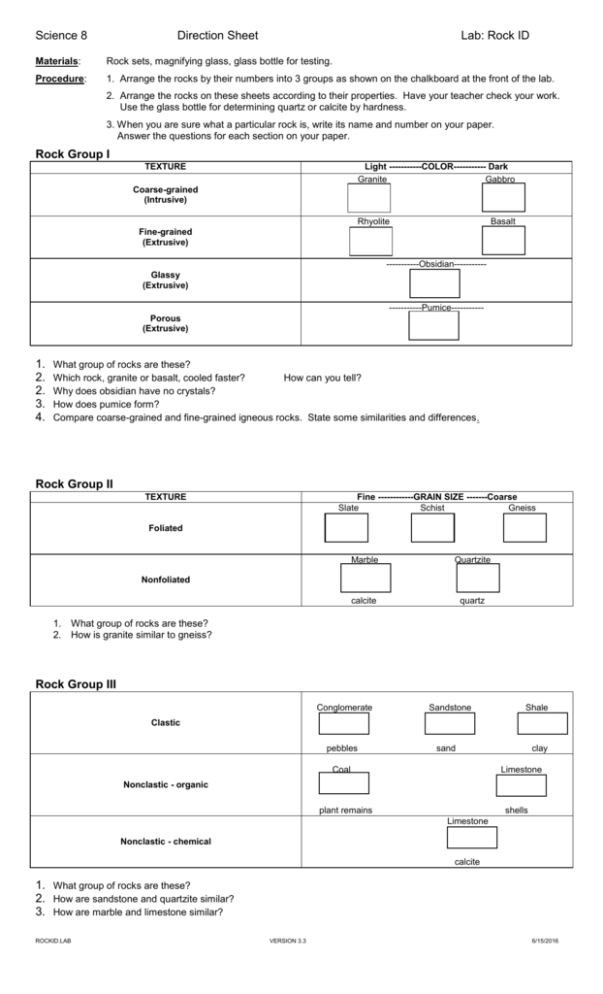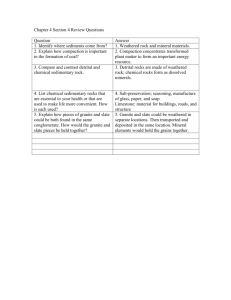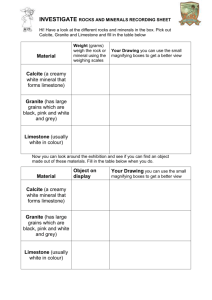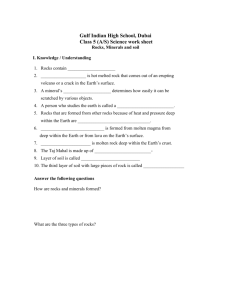Rock ID
advertisement

Science 8 Direction Sheet Lab: Rock ID Materials: Rock sets, magnifying glass, glass bottle for testing. Procedure: 1. Arrange the rocks by their numbers into 3 groups as shown on the chalkboard at the front of the lab. 2. Arrange the rocks on these sheets according to their properties. Have your teacher check your work. Use the glass bottle for determining quartz or calcite by hardness. 3. When you are sure what a particular rock is, write its name and number on your paper. Answer the questions for each section on your paper. Rock Group I TEXTURE Light -----------COLOR----------- Dark Granite Gabbro Coarse-grained (Intrusive) Rhyolite Basalt Fine-grained (Extrusive) -----------Obsidian----------Glassy (Extrusive) -----------Pumice----------Porous (Extrusive) 1. 2. 2. 3. 4. What group of rocks are these? Which rock, granite or basalt, cooled faster? How can you tell? Why does obsidian have no crystals? How does pumice form? Compare coarse-grained and fine-grained igneous rocks. State some similarities and differences. Rock Group II TEXTURE Fine ------------GRAIN SIZE -------Coarse Slate Schist Gneiss Foliated Marble Quartzite calcite quartz Nonfoliated 1. What group of rocks are these? 2. How is granite similar to gneiss? Rock Group III Conglomerate Sandstone Shale Clastic pebbles sand Coal clay Limestone Nonclastic - organic plant remains shells Limestone Nonclastic - chemical calcite 1. What group of rocks are these? 2. How are sandstone and quartzite similar? 3. How are marble and limestone similar? ROCKID.LAB VERSION 3.3 6/15/2016











